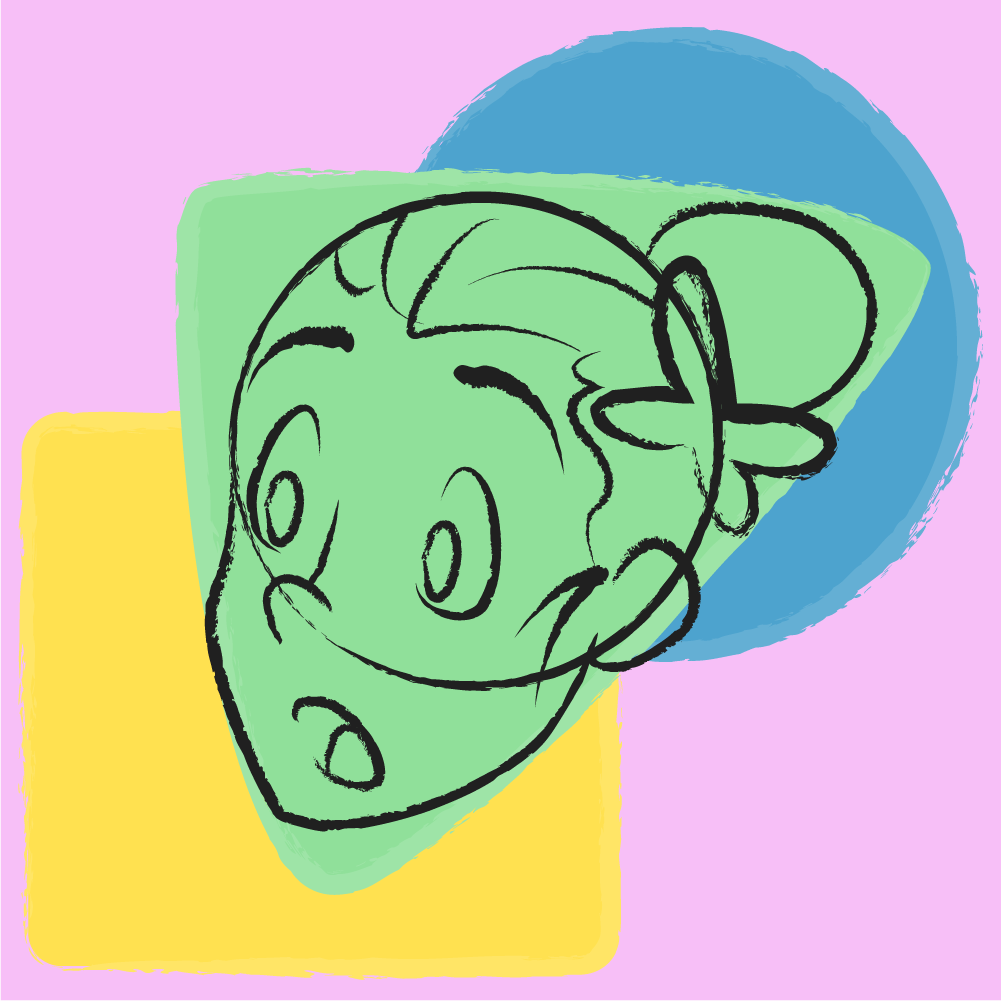Summary
In this lesson, students will design characters from shapes.
Essential Question
How does shape inform character design?
Objective and Purpose
Display slides 4–5, which introduce the topic and essential question: How does shape inform character design?
Anticipatory Set
Display slide 3. Provide students with a piece of copy paper as well as an art supply such as a marker. Instruct students to read the instructions on the slide and then start a timer. Students will draw one shape of their choosing (either basic or complex) and fill it each with one solid color. Students can use markers, pens, pencils, or pastels, but should stick to one medium for the entirety of the lesson.
Input
Display slide 6 and play the video.
Display slide 7. Explain the Commit and Toss instructional strategy. On a piece of notebook paper or sticky note, have students answer the question, "What was your one key takeaway from the video?" Have students toss the answers into a wastebasket and then choose four to read aloud.
Modeling
Display slide 8 and model the activity, changing a shape into a character and showing students how the process progresses.
Show students how they can change the shapes in inventive ways. Are they faces? Bodies? Are they human-like? Creatures? Display the example slides that show how things can change from different shapes.
When you have finished, move to slide 10 and play the survey instructions. Display slide 11 and instruct students to take the Day 1 survey.
End of Day 1 instruction
Check for Understanding
Display slide 12. Use the Fist to Five strategy to determine levels of understanding on the process from yesterday. Answer any questions from students operating from a low level of understanding.
Guided Practice
Display slide 13. Lead the students through the process using a triangle as an example shape. Have the students practice and get them to make a full page of iterations with different characters from the original shape on copy paper. They can make whatever changes they want, but every time they make a change it needs to be a new drawing. Float around the room offering positive critique.
Independent Practice
Move to slide 15. Instruct students to return to their original shape from the day prior and complete the iteration process with a new character on their own. Tell them to think back to the last video they watched and how each small change to the face greatly informed the final tone and expression of the character. How could a piece of clothing, jewelry, or handled item do the same?
Closure
On notebook paper, have the students respond to the Exit Ticket on slide 16: What did you learn from this experience? Did starting from such basic components hinder or hurt your creativity? Why? Did this change your perception of any popular character from a media franchise with which you are familiar?
Display slide 17 and play the survey instructions. Display slide 18 and instruct students to take the Day 2 survey.
Resources
Audity. (2021, August 5). Drawing shapes into faces! [Video]. YouTube. Retrieved June 7, 2022, from https://www.youtube.com/watch?v=FQd3h9tTMvk
K20 Center. (n.d.). Commit and Toss. Strategies.
K20 Center. (n.d.). Fist to Five. Strategies. https://learn.k20center.ou.edu/strategy/125


